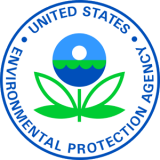EPA Publishes Midwest Region’s 2019 Annual Toxics Release Inventory Report and Analysis
In 2019, 89% of the chemical waste managed at facilities in Region 7 was not released into the environment
Environmental News
FOR IMMEDIATE RELEASE

“Today’s announcement underscores my commitment to helping communities and companies get the environmental information they need to prevent pollution and protect public health,” said EPA Administrator Andrew Wheeler. “The progress made under the TRI program in 2019 is proof that a cleaner environment and economic growth go hand in hand.”
In 2019, 89% of the chemical waste managed at facilities in Region 7 was not released into the environment, and was instead managed using preferred practices like recycling, energy recovery, and treatment, which is consistent with the proportion of production-related waste released into the environment nationally.
Since 2007, the amount of chemical waste released from Region 7 facilities decreased by 39% (86.9 million pounds), compared to 19% nationally. The regional decrease was driven by a reduction in releases from the primary metals and metal mining sectors. For 2019, 4% of Region 7 facilities (65 facilities) reported implementing new source reduction activities. Source reduction reporting rates in the region were among the highest in the electrical equipment sector, where 16% of facilities reported source reduction activities.
The 2019 TRI National Analysis released today reflects TRI chemical waste management activities, including releases, that occurred during calendar year 2019 and, therefore, does not indicate any potential impacts of the COVID-19 public health emergency that began in the United States in early 2020. Due to the significant analysis of reported information, this summary and interpretation of the most recent TRI data is released approximately six months after the reporting deadline.
National Highlights
This 2019 Analysis includes new features such as a dynamic and interactive report summary; an infographic illustrating how the TRI fits into the bigger picture of the Emergency Planning and Community Right-to-Know Act (EPCRA); and a profile of the fabricated metals manufacturing sector.
Other 2019 highlights include:
-
Air releases decreased by 23 million pounds from 2018 to 2019, continuing a long-term trend.
- Facilities reported initiating 3,285 new source reduction activities to prevent or reduce the creation of TRI chemical waste. This is the first year since 2014 that more new source reduction activities were implemented than in the prior year.
- Regional profiles illustrate the geographic diversity of U.S. industrial operations.
- For the first time, data are reported on nonylphenol ethoxylates, which are surfactants used in adhesives, dispersants, cleaners, paints, coatings, and other products.
- The percentage of chemical waste generated that facilities recycled in 2019 increased, continuing this trend in facilities opting to use EPA’s most preferred waste management method.
Background
Thanks to the passage of the Emergency Planning and Community Right-to-Know Act of 1986, which helped create EPA’s Toxics Release Inventory program, Americans now have greater awareness of how chemicals are being managed in their communities.
Today, nearly 22,000 facilities report annually on the use and quantities of over 760 chemicals they release to the environment or otherwise manage as waste to the Toxics Release Inventory (TRI) program. EPA, states and tribes receive TRI data from facilities in industry sectors such as manufacturing, mining, electric utilities, and commercial hazardous waste management. The Pollution Prevention Act also requires facilities to submit information on pollution prevention and other waste management activities of TRI chemicals.
To access the 2019 TRI National Analysis, including local data and analyses, visit EPA’s website.
Information on facility efforts to reduce TRI chemical releases is available online.
# # #
Learn more about EPA Region 7
View all Region 7 news releases
Connect with EPA Region 7 on Facebook: www.facebook.com/eparegion7
Follow us on Twitter: @EPARegion7
